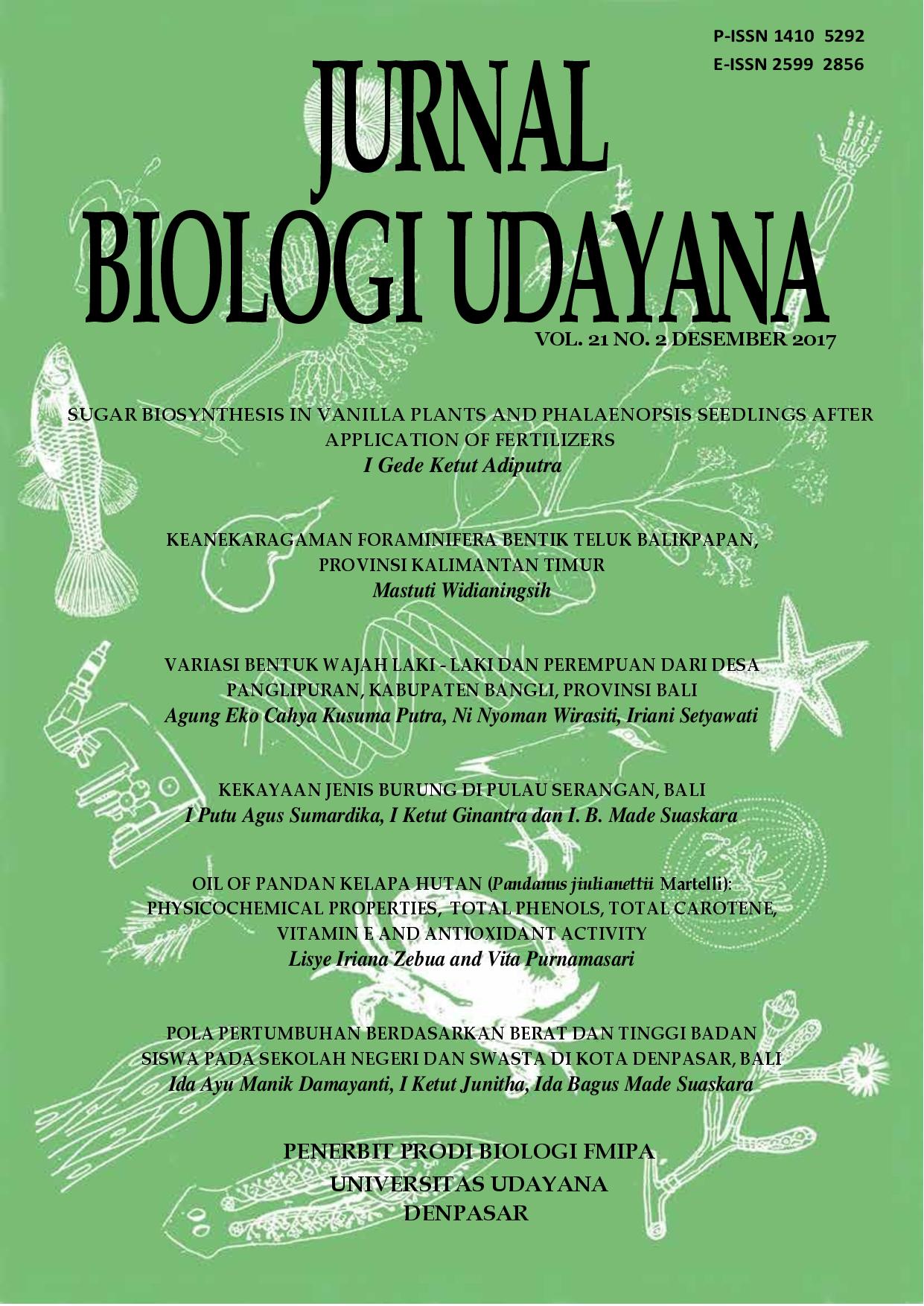SUGAR BIOSYNTHESIS IN VANILLA PLANTS AND PHALAENOPSIS SEEDLINGS AFTER APPLICATION OF FERTILIZERS
Abstract
In tropical country, vanilla encounters two main environmental conditions, wet and dry seasons. In the wet seasons when the amount of water available favours high growth rate, plants acquire more nutrients. However during dry seasons when water uptake via the root is limited and water loss from the shoot is increasing, vanilla will experience severe desiccations. In other cases, under condition of culture in bottle, phalaenopsis seedlings develop a very thin cuticle layers. These seedlings will experience a high rate of water loss when it is then transferred into ex vitro environmental conditions. Since mineral nutrient could decrease water potential in plants and enhanced by water loss, application of proper fertilizer into these vanilla plants and phalaenopsis seedling should not enhance the decreasing of water potential which could impair physiological mechanism. So, in order to ascertain nutrient requirement for these plants, two separate experiments were conducted. In the first experiment, vanilla plants grown in plantation were added 9.25, 1.1 and 4.6 g/plant Urea, TSP and KCL respectively. This experiment was repeated using different plants with application of fertilizer in higher doses; 18.5, 2.2 and 9.2 g/plant for Urea, TSP
and KCl, respectively. In order to examine the capacity of these plants to synthesize sugar, samples were then harvested in the period after fertilizer application, i.e. at day 0, 11 and 24. In the second experiments, phalaenopsis seedlings were sprayed every 1-2 days with liquinox and rosasol-N fertilizer using factorial experimental design.. In order to examine the effect of the fertilizer on sugar biosynthesis, leaves of these plants were harvested at day 132.
These experiments showed that addition of fertilizer into vanilla plants increased sugar content but addition of fertilizer into phalaenopsis seedling decreased sugar content. It is concluded that fertilizer applied into plants undergoing desiccation impair sugar biosynthesis.
Downloads
References
Anandaraj, M.J. Rema, B. Sasikumar, R. Suseela Bhai. 2005. Vanilla (Extension Pamphlet). V.A. Parthasarathy, Director, Indian Institute of Spices Research.
Chaves, M.M. 1991. Effects of water deficits on carbon assimilation. J.of Exp. Bot. 42(234):1-16.
Foley, M.E., M.O. Bancal and M.B. Nichols. 1992. Carbohydrate status in dormant and afterrippened excised wild oat embryos. Physiol. Plant. 85:461466.
Hernandez, J.H. 2011. Mexican vanilla production. In Handbook of Vanilla science and Technology (D.H.Frenkel and F. Belanger (Eds). Wiley- Blackwell,
West Sussex, UK.
Reinert, F. 1998. Epiphytes: photosynthesis, water balance and nutrients. In Scarano (F.R. and A.C. Franco (Eds). Ecophysiological strategies of
xerophytic and amphibious plants in the neotropics. Series Oecologia Brasilliensis IV: 87-108.
Yin-Tung Wang, M. Blanchard, R. Lopez, E. Runkle. 2007. Growing the best phalaenopsis. Part 2. Media, tranplating, water and nutrient requirements. www.aos.org.





